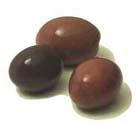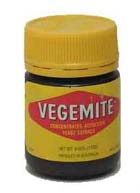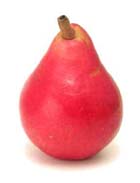Filo |
 | Phyllo (also spelled 'filo') dough is used in thin layers to make pastries and originated in Mediterranean cuisine. Versions of phyllo can also be used as crusts for pies or casseroles. Shredded phyllo is called kataifi and is also used for pastries. The Greek word Phyllon literally means 'leaf'. The layers of phyllo dough can be as thin as paper or a few millimeters thick. In Turkish cuisine these pastries are called börek or böregi, in Albanian cuisine they are called byrek, in Austrian-German-Hungarian cuisine the dough is called blätterteig and pastries made from phyllo are called strudel. In Bosnia the word burek is only used for the pastries with meat, other kinds are called pita. In Serbian language phyllo is called kore (plural) while pastries have various names, depending on mode of preparation. In Bulgaria it is called kori za banitsa (pl.) and the generic name for the pastries is banitsa, though there are sometimes special names for the specific kinds. |
Souvlakia |
| Skewered food |
Amfissa Olives |
 | Amfissa is versatile, use for green or black olives or oil. Strong vigor, grows quickly, & comes into production in 3-4 years. Spreading habit and canopy, over 70% of Greece's table growing acreage is this variety. |
Cracked green Olives |
| Produced by cracking unripe green olives. They are placing in water for several weeks to remove the bitterness and then packed in brine for shipping. |
Vegemite |
 | Vegemite is the registered brand name for a dark brown, salty food paste mainly used as a spread on sandwiches and toast, though occasionally used in cooking. Popular in Australia and New Zealand—Vegemite is semi-jokingly called one of Australia's national foods—it is seldom found elsewhere. Food technologist Dr. Cyril P. Callister invented Vegemite in 1923 when his employer, the Australian Fred Walker Company, had him develop a spread from brewer's yeast after war had disrupted the supply of imported yeast spreads. |
Arnott's |
| Arnott's (www.arnotts.com.au/) is the a biscuit company in the Asia Pacific region, it's a part of the Australian culture. With biscuits like Tim Tam, Iced Vovo's, Mint Slices, Tiny Teddies and Kingston, there wouldn't be a pantry in Australian that doesn't have an Arnotts biscuit in it! |
Kakadu Plum |
| This sharp flavored green plum has the world’s highest recorded fruit content of vitamin C, and is found from Katherine to the Kimberly. |
Wild Rosella Flowers |
| This Australian flower has a high percentage of phenols which are a natural potent anti-oxidant. In combination with Kakadu Plum these ingredients are used as topical free radical scavengers that will help prevent damage to the skin caused by the ravages of the urban environment. It is related to the native Hibiscus. It has a berry or rhubarb flavor. |
Bush Tomatoes |
 | Australian desert raisin (Solanum centrale), also known as Bush raisin, is a plant native to the more arid parts of Australia. It has been used as a food source by the native Australians for millennia. Like many plants of the Solanum genus, Desert raisin is a small bush and has a thorny aspect. It is a fast growing shrub that fruits prolifically the year after fire or good rains. The vitamin C-rich fruits are 1-3 cm in diameter and yellow in color when fully ripe. They dry on the bush and look like raisins. These fruits have a strong, pungent taste that makes them popular for use in sauces and condiments. |
Native Pear |
 | The native pear is- tree bearing pear-shaped fruit with a thick woody epicarp. |
|









